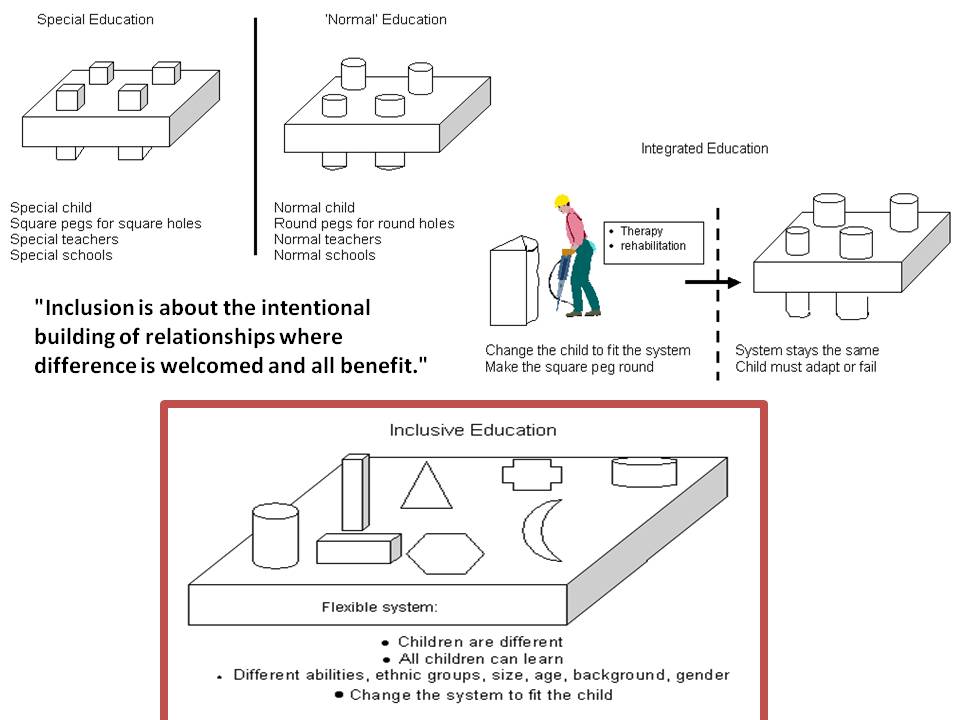Inclusion classrooms are a wonderful concept but it takes a lot of training, patience and compassion on the part of these teachers. Because fully inclusive classrooms have students across the educational and developmental spectrum, ranging from typically developing students to severe and profoundly disable students, it becomes a challenge for the teacher to find balance to serve all the students.
Most people like to talk about the benefits of an inclusion classroom. Those are numerous, popular, and easy to list. But what about the problems with inclusive classrooms? It is almost as if it is taboo to even suggest there are problems with creating an inclusive classroom. However, as any mainstream or special education teacher can tell you, there are indeed problems. Sometimes the best solutions fail because we have understood the problem incorrectly.
What if we enlist some of the challenges and then look at the infrastructure needed to mitigate some of these problems:
- Lack of experience in an inclusion setting. Some teachers have not been exposed to special needs classrooms. Educators need to coordinate efforts and understand the needs of the classroom in terms of developing skills and lesson plans.
- Lack of experience dealing with severe and profound disabilities. Students with severe and profound require more adaptation and medical attention than the average student. Teachers must be skilled in handling severe disabilities and create lesson plans based on individual abilities.
- Including all students in all activities. Teachers need to address how the classroom will communicate with each other and encourage participation. If there is a lack of adaptive equipment or adaptive communication and language tools, it makes it difficult for teachers to function as a united classroom.
- Educating students with less severe disabilities. When there are children of all abilities in the classroom, both physical and academic, children in the middle can easily fall between the cracks. Providing the right amount of attention and adaptation can be challenging, especially if there is a higher teacher to student ratio.
- Dealing with death. Death is difficult for any teacher to explain to their classroom. When you have a special needs inclusive classroom, there may be students with chronic illnesses and teachers may have to deal with the death of a student.
- Shortage of teacher aides. Normally, inclusive classrooms should have a regular educator and special needs educator. Due to the nature of the classroom and size, it is imperative that there be an appropriate number of teacher aides to assist the teachers with day to day activities.
- Teaching compassion to students. Not all students have been exposed to persons with special needs and this becomes a challenge to teachers. Teachers need to play a role of teaching compassion and empathy to the students.
- Dealing with parents of “typically developing” students. As some students are not use to dealing with persons with special needs, parents are no exception. Teachers need to convey to parents how the classroom is conducted and that all educational needs will be met.

Special, integrated and inclusive are often used interchangeably, as if they all mean the same thing. In some languages it is not always possible to make the distinction between integration and inclusion. However we believe that an understanding of the distinction between the two terms is essential to the inclusive process.
I will further simplify this by saying that integrated education is about ‘going to school’ whereas inclusive education is about ‘participating in school’. However it is important not to become too school-focused and remember that education is much broader than schooling. Inclusive education should incorporate a range of strategies within a community which ensure that all children have equal access to education. This education should equip them for life as part of that community and help develop their potential. For a child with severe learning difficulties this may mean education within the home and family which focuses on self-help skills together with support from the community in the long-term care of the child. For a deaf child it may mean having access to deaf adults and developing a local sign language in order to be included in school and society on an equal basis. Accessibility and participation are therefore critical issues in inclusive education.
One needs to start with making a deliberate effort towards our participation in this process. Unless diversity is welcomed, and relationships are consciously nurtured, there will be little change in the educational experience of all. Of course, policy and legislative change is desirable, specialist skills can be useful and a greater financial investment in schools would be excellent, but let’s start with working relationships.
